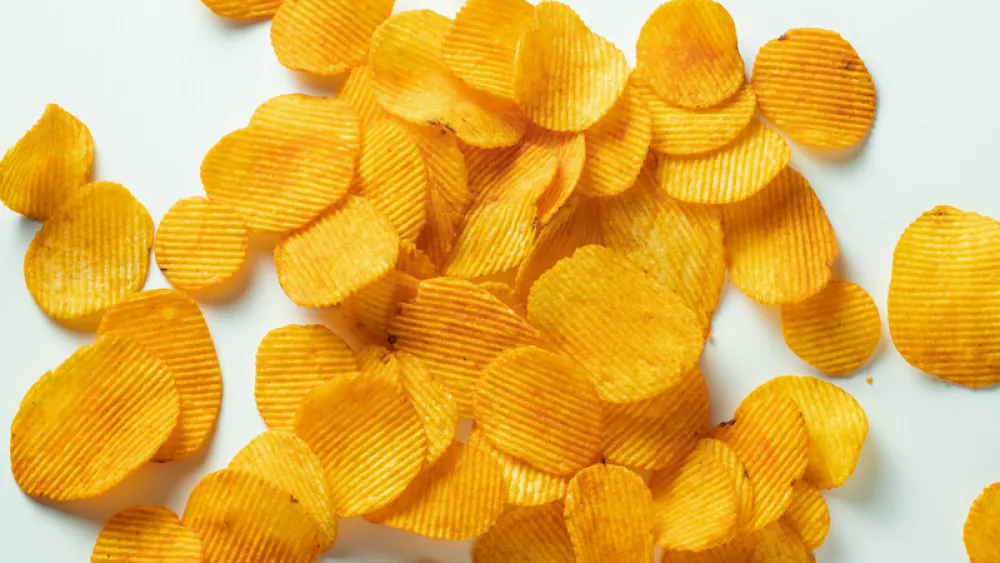





Healthy Lifestyle
Ultra-processed foods: What are they and how can I avoid them?
Published: March 29, 2024

Fast food. Packaged cookies. Potato chips. Crackers. Lunch meat. Hot dogs.
What do these everyday food items have in common? Each can be classified as an ultra-processed food – the main source of 58% of calories consumed in the U.S.
Ultra-processed foods are made from substances extracted from other foods, such as fats – including hydrogenated fats – starches and added sugars. They have added ingredients – such as sugar, salt, artificial colors and flavors, preservatives, and stabilizers – not usually found in food prepared from recipes with ingredients you can buy at the grocery store.
Diets high in sodium, sugar and saturated fat can lead to unhealthy weight gain and even obesity, which increases the risk of chronic inflammation, cardiovascular disease, cerebrovascular disease, diabetes and cancer.
Processed foods versus ultra-processed foods
A processed food is any food that has undergone changes that alter its natural composition. This could be as simple as heating, freezing, dicing or juicing. But just because food is processed doesn’t mean it’s unhealthy. Frozen fruits and vegetables, fresh juices, nut butters, tofu, whole wheat bread, plain yogurt, and dried fruits are all examples of processed foods.
Some processed foods may actually help you include more fruits and vegetables in your diet because they’re easier to prepare and more convenient to consume. Look for options that are closest to their natural state, such as frozen fruits and vegetables, and whole grain cereals with no added sugar.
Ultra-processed foods fall on the very end of the spectrum when it comes to food categories. They are stripped of most of their nutrients and include a lot of additives. Generally, you won’t find most of their ingredients in your kitchen at home.
It’s risky to eat a lot of ultra-processed foods that are high in calories and lack nutritional value. That usually means you’re largely ignoring fruits and vegetables, lean meats, whole grains, and low-fat dairy products – foods that provide essential amounts of fiber, vitamins, minerals and antioxidants; aid in disease prevention; and help you maintain a healthy weight.
Where to start
If you’re looking to decrease the ultra-processed foods in your diet, start with incorporating more fresh or frozen fruits and vegetables. And start choosing whole grain cereal, bread and pasta that has 5 grams of fiber or more per serving and no added sugars.

It’s also important to find credible information when you’re researching healthy eating habits. Here are a few quick suggestions from reputable sources:
- The USDA’s MyPlate guide suggests that your necessary protein intake can come from lean meats, vegetables and low-fat dairy products.
- The American Heart Association endorses the Mediterranean diet, which encourages more fish and healthy fats such as olive oil.
- The American Institute for Cancer Research recommends the New American Plate, which teaches that at least two-thirds of your plate should consist of vegetables, fruits, whole grains and beans.
One key to healthy eating is to prioritize whole and minimally processed foods. Be sure to eat nutrient-dense foods most of the time and limit ultra-processed foods. Keep in mind that balance is important – eating foods that are ultra-processed on occasion is OK. But remember to read the nutrition facts to be more aware of certain ingredients and choose options that are lower in added sugar, sodium, saturated fat, trans fat and mystery additives.
Always on the go?
If you feel like life is too busy to regularly cook and prepare meals, set aside one hour each week to meal prep/menu plan. You might be surprised how many meals or dishes you can make from the same ingredients, which can lead to decreased food waste and less time needed to prepare meals. For example, you could grill several servings of chicken breast one night and plan to eat it on a salad one day and add it to a stir fry the next. If you make enough, you could eat the same meal twice or more in the same week. If you enjoy more variety in your diet, consider freezing leftovers in serving-sized containers to make reheating less time-consuming.
It’s also important to remember that some meals are simple enough that it’d take you the same time to prepare something at home as waiting at a drive-thru for a meal full of ultra-processed foods.

I also recommend creating a grocery list for a weekly shopping trip. That way you can have the ingredients you need and avoid unnecessary trips to the grocery store. And you should do your shopping on a full stomach so you’re not tempted to purchase ultra-processed foods because they look appealing. Meal delivery services like HelloFresh and Home Chef are also good options if you’d rather have someone else figure out all the ingredients you need for certain dishes and provide simple cooking instructions. If you’re worried about the time it takes to shop, there are many convenient pickup and delivery options available.
If you don’t think you’re a good cook, that’s OK. Consider checking out a recipe book from the library or watching videos on YouTube or TikTok to learn how to prepare certain meals. Investing in good nutrition will help you feel better and improve your overall health, which is worthy of your time and effort.
Final words
Eating healthy is a lifestyle choice. It’s not a magic pill or something that happens overnight. My advice for anyone trying to clean up their plate and move away from ultra-processed foods is to make small goals and share them with others. We’re more accountable if we have someone checking in with us. Don’t quit if you don’t reach a goal or fall back into your old habits. One bad meal or day doesn’t mean you’ve failed – it’s an opportunity to keep going.


